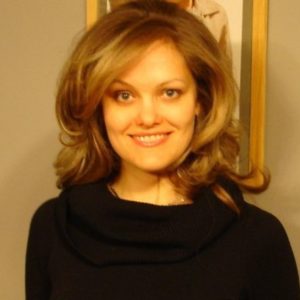During Open Tour Chicago we conducted a series of interviews with data scientists attending the conference. This is the first of a multipart series recapping our conversations.
Be sure to keep an eye out for updates by checking our website or following us on Twitter @h2oai.

H2O.ai: How did you become a data scientist?
Kharlamova: I’m a physicist.
H2O.ai: Okay.
Kharlamova: I came here from the academia of physics. I worked for seven years in academia for physics and math, and four years ago I switched to finance to be more of a math person than a physics person.
H2O.ai: I see.
Kharlamova: And from finance I came to the data industry. At that time data science was booming.
H2O.ai: Oh, okay.
Kharlamova: And I got excited with all new the stuff and technologies coming up, and here I am.
H2O.ai: Okay, nice. So what business do you work for now?
Kharlamova: I work for Grainger. We’re focused on equipment distribution; serving as a connector between manufacturing plants, factories and consumers.
H2O.ai: So what are some of the problems that you guys are looking to solve?
Kharlamova: Building recommendation engines for customers. For that you need to leverage natural language processing and positive logic.
H2O.ai: What resources do you use to stay on top of the information in the data science world? Are there blogs that you read or like, or places that you go?
Kharlamova: Staff communities and data science communities are important sources of information.
H2O.ai: Yes. That’s great. And is there any advice that you would have for someone who’s an up and coming data scientist, or someone who’s just generally interested in the field?
Kharlamova: Advice to somebody who’s generally interested in the field?
H2O.ai: Yes, about becoming a data scientist.
Kharlamova: It’s a difficult question, because if a person takes a one year course on Coursera or somewhere else on data science, it doesn’t mean that they’re a data scientist yet, because you need to see the problem in the big picture.
H2O.ai: Yes.
Kharlamova: You need to be able to identify the challenges, the problem and various solutions. You cannot explore everything. You need to narrow down your choice.
H2O.ai: Yes, okay.
Kharlamova: You also need to have substantial knowledge of mathematics, statistics and computer science. But understand that you don’t need to immediately start using a sophisticated random forest model. Maybe you can just use simple algebra. Maybe it’s a question of two plus two.
H2O.ai: Right.
Kharlamova: And then you don’t need all these assumptions and approximations. Because I’m a physicist, I like a defined correct answer much more than something fuzzy. To be successful as a data scientist you need to decide how best to approach a problem then find a solution that’s as simple as possible.
H2O.ai: Okay. I see. That’s great advice. So it’s not just about having the knowledge, but it’s also about having an approach that is, like you said, simple, that you can probably use more often to provide a clear answer. That’s great, great advice.







